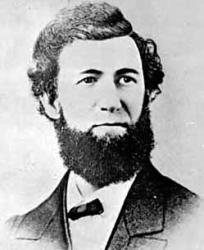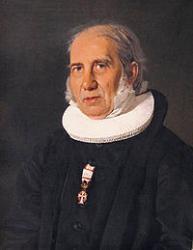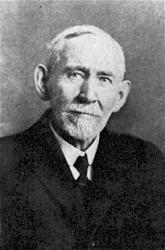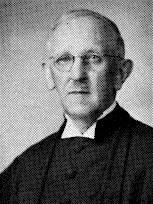Planning worship?
Check out our sister site, ZeteoSearch.org,
for 20+ additional resources related to your search.
- |
User Links
Person Results
Anonymous
Meter: 7.7.8.8.7.7 Translator of "I Am Jesus' Little Lamb" in Moravian Book of Worship In some hymnals, the editors noted that a hymn's author is unknown to them, and so this artificial "person" entry is used to reflect that fact. Obviously, the hymns attributed to "Author Unknown" "Unknown" or "Anonymous" could have been written by many people over a span of many centuries.
Anonymous
Ewald Weiss
1906 - 1998 Person Name: Ewald Weiss, 1906-98 Meter: 7.7.8.8.7.7 Arranger of "WEIL ICH JESU SCHÄFLEIN BIN" in Lutheran Service Book b. Nov. 9, 1906, Wladyslawowka [Volhynia], d. May 16, 1998, Nuremberg; organist, composer, church musician
Ewald Weiss
Frederick W. Foster
1760 - 1835 Meter: 7.7.8.8.7.7 Translator (from German) of "Jesus Makes My Heart Rejoice" in The Cyber Hymnal Foster, Frederick William, second son. of William Foster, was born at Bradford, Aug. 1, 1760, and educated at Fulneck, near Leeds, and at Barby in Prussian Saxony. Entering the Moravian Ministry he held several appointments until 1818, when he was consecrated a Bishop of the Moravian Church. He died at Ockbrook, near Derby, April 12, 1835. He compiled the Moravian Hymn Book of 1801, the Supplement of 1808, and the revised edition of 1826. His translations from the German, and his original hymns appeared in that collection. Two of his original hymns are in the Irish Church Hymnal, 1873; (1) "Lord, Who didst sanctify" 1808 (Holiness desired); and (2) "With thanks before the Lord appear," 1826 (Praise of the Saviour). [George Arthur Crawford, M. A.]
--John Julian, Dictionary of Hymnology, Appendix, Part II (1907)
Frederick W. Foster
B. R. Hanby

1833 - 1867 Meter: 7.7.8.8.7.7 Author of "Who is He?" in Redemption Songs Benjamin Russell Hanby was born July 22, 1833, the oldest of eight children, to Bishop William Hanby in Rushville, OH. The family moved to Westerville,OH where Bishop Hanby was a "conductor" on the Underground Railroad. In his short life Benjamin graduated from Otterbein, taught school, became a United Brethren minister, started a singing school, was editor for John Church publishers in Cincinnati and composed many songs and hymns before he died of tuberculosis March 15, 1867. His home in Westerville was Ohio's first memorial to a composer. It was a stop on the Underground Railroad for slaves escaping to Canada and is a national historic site, a Methodist church Landmark and a Network to Freedom site for the National Park Service. There is a Hanby Residence Hall at Otterbein University. Best known for "Up on the housetop" and "Darling Nellie Gray," Hanby published many hymns including "Little Eyes" and "Who is He?
Mary Louise VanDyke
B. R. Hanby
N. F. S. Grundtvig

1783 - 1872 Person Name: Nikolai F. S. Grundtvig, 1783-1872 Meter: 7.7.8.8.7.7 Author of "Bright and Glorious Is the Sky" in Evangelical Lutheran Worship Nicolai Frederik Severin Grundtvig was the son of a pastor, and was born at Udby, in Seeland, in 1783. He studied in the University of Copenhagen from 1800-1805; and, like some other eminent men, did not greatly distinguish himself; his mind was too active and his imagination too versatile to bear the restraint of the academic course. After leaving the university he took to teaching; first in Langeland, then (1808) in Copenhagen. Here he devoted his attention to poetry, literature, and Northern antiquities. In 1810 he became assistant to his father in a parish in Jutland. The sermon he preached at his ordination, on the subject "Why has the Lord's word disappeared from His house," attracted much attention, which is rarely the case with "probationers'" sermons. On his father's death, in 1813, he returned to Copenhagen, and for eight years devoted himself mainly to literature. The poetry, both secular and religious, that he produced, drew from a friend the remark that "Kingo's harp had been strung afresh." In 1821 King Frederik vi. appointed him pastor of Prasloe, a parish in Seeland, from which he was the next year removed to Copenhagen, and made chaplain of St. Saviour's church in Christianshavn. From the time of his ordination he had been deeply impressed with Evangelical church sentiments, in opposition to the fashionable Rationalism and Erastianism of the day; and adhered to the anti-rationalist teaching of Hauge, whose death at this time (1824) seemed to be a call to Grundtvig to lift up his voice. An opportunity soon presented itself; Professor Clausen brought out a book entitled Katholicismens og Protestantismens Forfatning, Ldre, og Ritus ("The condition, teaching, and ritual of Catholicism and Protestantism"). This book was replete with the Erastian Rationalism which was so especially distasteful to Grundtvig, who forthwith, in his Kirkens Gjenmsele ("The Church's Reply," 1825), strongly opposed its teaching, and laid down truer principles of Christian belief, and sounder views of the nature of the Church. This caused a sensation: Grandtvig (who had not spared his opponent) was fined 100 rixdollars, and the songs and hymns which he had written for the coming celebration of the tenth centenary of Northern Christianity were forbidden to be used. On this he resigned his post at St. Saviour's, or rather was forced to quit it by a sentence of suspension which was pronounced in 1826, and under which he was kept for 13 years. He took the opportunity of visiting England in 1829, 30, and 31, and consulting its libraries, mainly with a view to a further insight into Northern antiquities, and to help his studies in the early English tongue. His edition of Cynewulfs beautiful poem of the Phenix from the Codex Exoniensis, the Anglo-Saxon (so-called) text, with a preface in Danish, and a fri Fordanskning (free rendering in Danish), published in 1840*, is a result of this journey and enforced leisure. Tired of his long silence, his numerous friends and admirers proposed to erect a church for him, and form themselves into an independent congregation, but this was not permitted. He was allowed, however, to hold an afternoon service in the German church at Christianshavn. There ho preached for eight years, and compiled and wrote his hymn-book, Sang-Vdrk til den Danske Kirkce ("Song-work for the Danish Church"). He still worked on towards his object of raising the Christian body to which ho belonged from the condition of a mere slate establishment to the dignity of a gospel-teaching national church. In 1839 (the year of the death of King Frederik vr., and the accession of his cousin Chrisliem vni.) the suspension was removed, and he was appointed chaplain of the hospital Vartou, a position which he held till his death. In 1863 the king (Frederik vn.) conferred on him the honorary title of bishop. The good old man died suddenly, in his 89th year, on Sept. 2, 1872, having officiated the day before. As Kingo is the poet of Easter, and Brorson of Christmas, so Grundtvig is spoken of as the poet of Whitsuntide.
--John Julian, Dictionary of Hymnology,, p. 1001 (1907)
N. F. S. Grundtvig
Henriette Louise von Hayn
1724 - 1782 Person Name: Henrietta Luise von Hayn Meter: 7.7.8.8.7.7 Author of "I am Jesus' little lamb" in Common Service Book of the Lutheran Church Hayn, Henrietta Luise von, daughter of Georg Heinrich von Hayn, master of the hounds to the Duke of Nassau, was born at Idstein, Nassau, May 22, 1724. In 1746 she was formally received into the Moravian community at Herrnhaag. There, and, after the dissolution of this community, at Grosshennersdorf, and, after 1751 at Herrnhut, she was engaged as teacher in the Girls' School; and after 1766 in caring for the invalid sisters of the community. She died at Herrnhut, Aug. 27, 1782. (Koch, vi. 443-447; Allgemeine Deutsche Biographie, xi. 1.58, &c.) She was a gifted hymnwriter. A fervent love to Christ pervades her produc¬tions; and they are remarkably free from the unpleasant sentimentalism and that dwelling on the physical details of our Lord's Passion which mars so many of the Moravian hymns of that period. Over 40 hymns or portions of hymns by her are included in the Brüder Gesang-Buch of 1778. Only one has come into English use outside the Moravian hymnbooks, viz.:—
Weil ich Jesu Schaflein bin. Children. This beautiful hymn for children, regarded as Lambs of the Good Shepherd, first appeared in the Brüder Gesang-Buch, 1778, No. 1179, in 3 st. of 6 1. It has been included in many recent German collections, as the Berlin Geistliche Lieder, ed. 1863, No. 120. Translated as: —
1. Jesus makes my heart rejoice, in full, by F. W. Foster and J. Miller, as No. 576 in the Moravian Hymn Book, 1789 (1886, No. 1006). Included, from the edition of 1826, in Dr. Pagenstecher's Collection, 1864, and others.
2. Seeing I am Jesus' lamb, a good and full translation by Miss Winkworth in her Lyra Germanica, 2nd Ser., 1858, p. 90. Repeated in the People's Hymnal 1867, Book of Praise for Children, 1881, and in America in the Pennsylvania Lutheran Church Book, 1868, &c.
3. I am Jesus' little lamb, a good and full translation by Dr. W. F. Stevenson for his Hymns for Church & Home, 1873, c. 58, dated 1871. Repeated in Allon's Children's Worship, 1878, the Methodist Sunday School Hymnbook, 1883, and others.
Another translation is : "Since I'm Jesus' sheep I am," by R. Massie, in the Day of Rest, 1880, p. 622. [Rev. James Mearns, M.A.]
-- John Julian, Dictionary of Hymnology (1907)
Henriette Louise von Hayn
F. A. Graves

1856 - 1927 Person Name: Frederick A. Graves Meter: 7.7.8.8.7.7 Author of "Hark,The Heav'nly Voices Sing" in The Cyber Hymnal Rv Frederick Arthur Graves USA 1856-1927. Born at Williamstown, MA, he was raised in a Christian family, but was orphaned at age 9 after the death of his father, a taylor, then three years later his mother (tuberculosis), he lived on a farm with a family names Hollis that worked him hard and treated him poorly. He was diagnosed with epilepsy when 14. At 21 he moved to Nobles County, MN, and it seemed that his seizures had stopped. Grateful for that, he served the American Sunday School Union as an organizer and evangelist. He was musical, and after age 35 wrote 43 songs. He, with wife Vina, raised three children, Arthur, Irene, and Carl. He studied Bible and music in Chicago, IL and Northfield, MA. Returning to Minneapolis and hearing evangelist John A Dowie, he experienced permanent healing, which provided a backdrop for his gospel songs. He was ordained an Assemblies of God minister in 1916. Later, he moved to Zion Hill,IL, where he lived the rest of his life. He died at Zion City, IL. Nearly 1000 people attended his funeral there.
John Perry
F. A. Graves
J. C. Aaberg

1877 - 1970 Person Name: Jens Christian Aaberg, 1877-1970 Meter: 7.7.8.8.7.7 Translator of "Bright and Glorious Is the Sky" in Evangelical Lutheran Worship Jens Christian Aaberg (b. Moberg, Denmark, 1877; d. Minneapolis, MN, 1970) immigrated to the United States in 1901. Educated at Grand View College and Seminary in Des Moines, Iowa, he entered the ministry of the Danish Evangelical Lutheran Church in America and served congregations in Marinette, Wisconsin; Dwight, Illinois; and Minneapolis, Minnesota. Aaberg wrote Hymns and Hymnwriters of Denmark (1945), translated at least eighty hymns from Danish into English, and served on four hymnal committees. In 1947 King Frederick of Denmark awarded him the Knight Cross of Denmark.
--Psalter Hymnal Handbook, 1987
J. C. Aaberg
Purcell James Mansfield
1889 - 1968 Person Name: P. J. Mansfield Meter: 7.7.8.8.7.7 Arranger of "TIBERIAS" in Redemption Songs
Purcell James Mansfield


 My Starred Hymns
My Starred Hymns


